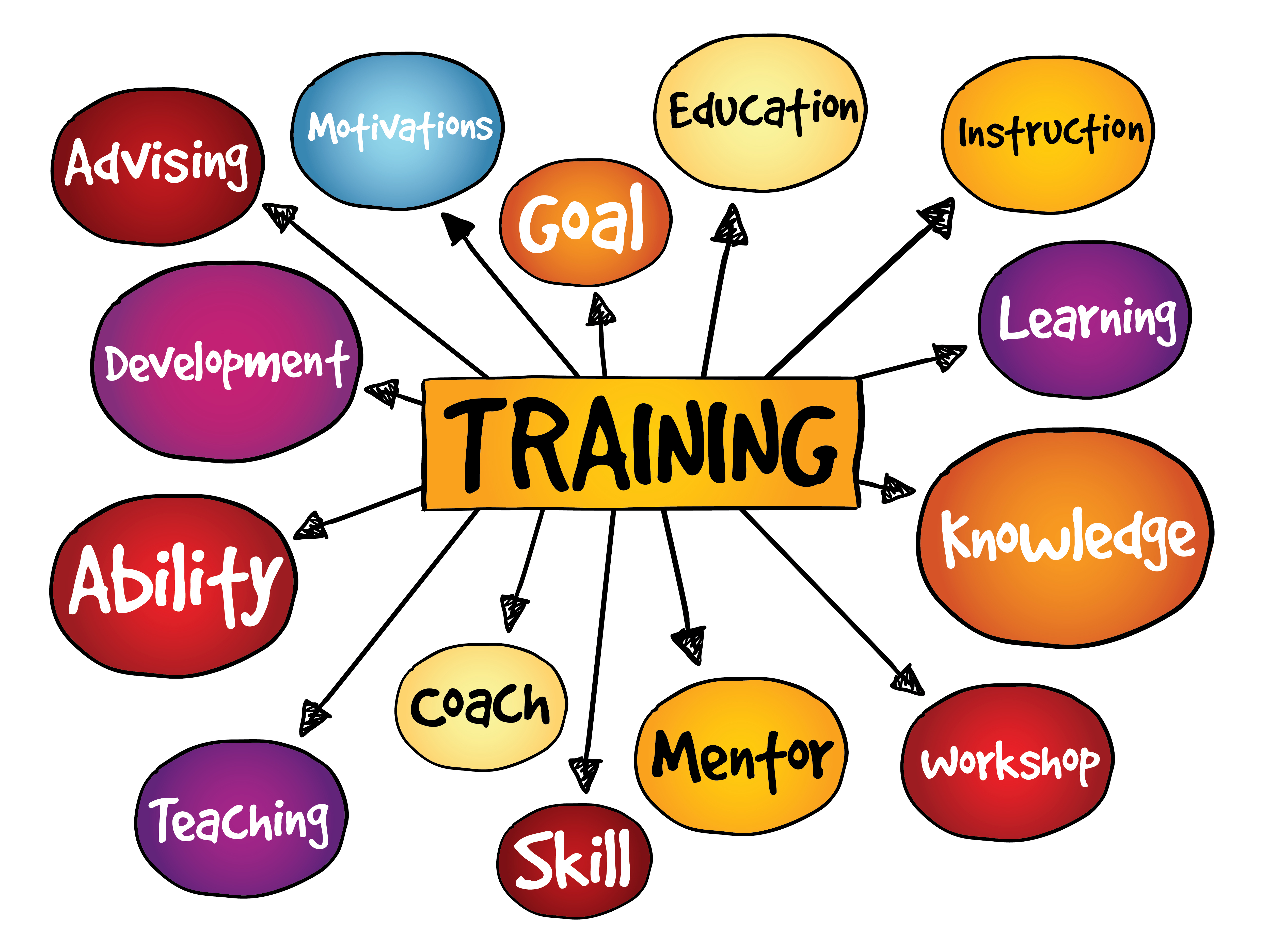On the job training is the responsibility of management alone, and this statement brings up a lot of interesting questions. Is it really just the management's job to ensure employees are properly trained? Or does the responsibility lie with the employees themselves? Let’s dive into this topic because it’s not as black and white as it seems. We’re talking about more than just training; we’re talking about the future of your workforce and how they contribute to the success of your company. So, buckle up because this is going to be an eye-opener.
Imagine a scenario where the management doesn’t prioritize training. Employees are left to fend for themselves, figuring out how to use new software, handle clients, or even operate machinery. Sounds chaotic, right? That’s why on the job training plays such a crucial role in shaping the efficiency and effectiveness of a company. But does all the responsibility fall solely on the management’s shoulders?
As we explore this topic, we’ll break down the responsibilities, the benefits, and the challenges of on-the-job training. By the end of this article, you’ll have a clearer understanding of why training is vital and how both management and employees play a part in making it successful. Let’s get started!
- Thank You To Caregiver Celebrating The Heart And Soul Behind Every Act Of Care
- Creative And Fun Teddy Bear Names Thatll Make Your Heart Melt
Why On the Job Training Matters
Boosting Productivity and Performance
When we talk about on the job training, one of the first things that come to mind is productivity. Employees who receive proper training tend to perform better and faster. They understand their roles and responsibilities more clearly, which leads to fewer mistakes and more efficient work. But here’s the thing: for this to happen, management has to step up and provide the necessary resources and guidance.
Studies have shown that companies investing in employee training see a significant increase in productivity. According to a report by the Association for Talent Development (ATD), organizations that offer comprehensive training programs have 218% higher income per employee than companies that don’t. Crazy, right? This statistic alone proves that training isn’t just a nice-to-have; it’s a need-to-have.
Employee Retention and Satisfaction
Let’s not forget about employee retention. When employees feel valued and supported through training, they’re more likely to stick around. On the flip side, if they feel neglected or unprepared for their roles, they might start looking elsewhere. Management plays a crucial role here by creating a culture of learning and development.
- Unveiling The Charm Of Ugly Disney Characters A Celebration Of Quirkiness
- Celebrating Love And Milestones The Ultimate Guide To 60th Anniversary Sayings
Here’s a fun fact: employees who receive regular training are 30% less likely to leave their jobs. That’s a huge deal for any company trying to reduce turnover costs. So, if you’re a manager or business owner, investing in training isn’t just about improving performance; it’s also about keeping your best talent.
The Role of Management in On the Job Training
Setting the Foundation
Management is responsible for setting the foundation for effective on-the-job training. This includes developing training programs, allocating resources, and ensuring that trainers are qualified. It’s not just about throwing employees into a training session and hoping for the best. Management needs to be involved every step of the way.
For instance, a good manager will assess the needs of their team before designing a training program. They’ll identify skills gaps, set clear objectives, and measure the effectiveness of the training. This proactive approach ensures that the training is relevant and beneficial for the employees.
Providing Resources and Support
Another key responsibility of management is providing the necessary resources and support. This could mean anything from purchasing new software to hiring external trainers. The point is, management has the power to make or break a training program by the resources they allocate.
Think about it: if an employee is asked to learn a new system but isn’t given access to the tools they need, how effective will the training be? Not very, right? That’s why management needs to ensure that employees have everything they need to succeed.
Common Misconceptions About On the Job Training
It’s Only for New Employees
One of the biggest misconceptions about on-the-job training is that it’s only for new employees. Wrong! Training should be an ongoing process that benefits everyone in the company. As industries evolve and technology advances, even seasoned employees need to stay updated with the latest trends and tools.
For example, a marketing team might need training on new digital advertising platforms, while a sales team might benefit from learning about the latest CRM software. The point is, training isn’t a one-time event; it’s a continuous journey of learning and growth.
It’s Expensive and Time-Consuming
Another misconception is that on-the-job training is expensive and time-consuming. While it’s true that there are costs involved, the long-term benefits far outweigh the initial investment. Think about the cost of hiring and training new employees versus retaining and upskilling your current workforce. Which one sounds more cost-effective?
Plus, with the rise of e-learning platforms and online courses, training doesn’t have to be as expensive or time-consuming as it used to be. Management can leverage these tools to deliver training in a more efficient and cost-effective manner.
The Benefits of On the Job Training
Improved Skills and Knowledge
On-the-job training is all about improving skills and knowledge. Employees get hands-on experience, which is often more effective than theoretical learning. They learn by doing, and this practical approach helps them retain information better.
For example, a new hire in the customer service department might shadow a senior employee to learn how to handle difficult customers. This kind of experiential learning is invaluable and can’t be replicated in a classroom setting.
Increased Confidence and Job Satisfaction
When employees feel confident in their abilities, they’re more likely to be satisfied with their jobs. Training gives them the skills and knowledge they need to excel, which boosts their confidence and morale. And when employees are happy, they’re more productive and engaged.
Management plays a crucial role here by creating a supportive environment where employees feel encouraged to learn and grow. This culture of continuous improvement leads to a more satisfied and motivated workforce.
Challenges in Implementing On the Job Training
Resistance to Change
One of the biggest challenges in implementing on-the-job training is resistance to change. Some employees might be hesitant to learn new skills or adopt new processes. This is where management needs to step in and communicate the benefits of training clearly.
For example, if a team is resistant to adopting new software, management can explain how it will make their jobs easier and more efficient. They can also provide incentives, such as bonuses or recognition, for employees who embrace the change.
Measuring the Effectiveness of Training
Another challenge is measuring the effectiveness of training. How do you know if the training is actually making a difference? This is where management needs to establish clear metrics and KPIs to evaluate the success of the training program.
For instance, you could measure the improvement in productivity, reduction in errors, or increase in customer satisfaction. By tracking these metrics, management can determine whether the training is having the desired impact and make adjustments if necessary.
Employee Responsibility in On the Job Training
Taking Ownership of Learning
While management has a significant role to play in on-the-job training, employees also have responsibilities. They need to take ownership of their learning and actively participate in the training process. This means showing up on time, asking questions, and applying what they’ve learned in real-world situations.
Employees who take initiative and seek out additional learning opportunities are more likely to succeed. Management can encourage this behavior by creating a culture of learning and recognizing employees who go above and beyond in their training efforts.
Providing Feedback
Employees also have a responsibility to provide feedback on the training program. They can offer insights into what works and what doesn’t, helping management improve future training sessions. This collaborative approach ensures that the training is relevant and effective for everyone involved.
For example, an employee might suggest incorporating more interactive elements into the training or providing more hands-on practice. These suggestions can help management create a more engaging and impactful training experience.
Best Practices for On the Job Training
Creating a Structured Training Program
One of the best practices for on-the-job training is creating a structured program. This means having a clear plan with defined objectives, timelines, and evaluation criteria. A well-structured program ensures that employees receive consistent and comprehensive training.
Management can involve employees in the planning process by asking for their input and feedback. This collaborative approach helps ensure that the training meets the needs of both the company and the employees.
Using Technology to Enhance Training
Another best practice is using technology to enhance training. E-learning platforms, virtual reality, and gamification are just a few examples of how technology can make training more engaging and effective. Management can leverage these tools to deliver training in a way that resonates with employees.
For instance, a company might use a gamified platform to teach employees about cybersecurity best practices. This approach makes learning fun and interactive, increasing engagement and retention.
Conclusion
On the job training is the responsibility of management alone, but that doesn’t mean employees don’t have a role to play. Both parties need to work together to create a successful training program that benefits everyone involved. By investing in training, companies can improve productivity, increase employee satisfaction, and reduce turnover costs.
So, what’s the takeaway here? Training isn’t just a nice-to-have; it’s a need-to-have. Management needs to prioritize training and provide the necessary resources and support. Employees, on the other hand, need to take ownership of their learning and actively participate in the training process.
Now it’s your turn. Have you had any experiences with on-the-job training? Did it work for you, or did you face any challenges? Leave a comment below and let’s start a conversation. And don’t forget to share this article with your network. Together, let’s make on-the-job training a priority for every company out there!
Table of Contents
- Why On the Job Training Matters
- The Role of Management in On the Job Training
- Common Misconceptions About On the Job Training
- The Benefits of On the Job Training
- Challenges in Implementing On the Job Training
- Employee Responsibility in On the Job Training
- Best Practices for On the Job Training



Detail Author:
- Name : Derrick Balistreri
- Username : ygerhold
- Email : gcrona@gmail.com
- Birthdate : 2003-11-13
- Address : 659 Dannie Pass Apt. 805 South Erin, VT 73570-8383
- Phone : +14799230011
- Company : Blanda-Hettinger
- Job : Roustabouts
- Bio : Incidunt tempore est et maxime vel et. Molestiae molestiae rerum facere molestiae ipsum magni. Excepturi facilis rem dolores qui.
Socials
linkedin:
- url : https://linkedin.com/in/rkonopelski
- username : rkonopelski
- bio : Minima odio voluptas est dolor eum.
- followers : 3363
- following : 2458
tiktok:
- url : https://tiktok.com/@rkonopelski
- username : rkonopelski
- bio : Dicta sed recusandae quis quasi ad aut. Est nemo labore eveniet aut.
- followers : 344
- following : 936
twitter:
- url : https://twitter.com/rachael_real
- username : rachael_real
- bio : Nam natus omnis consequatur non aut optio. Sed quas itaque laudantium. Ut et doloremque aut voluptas ullam.
- followers : 1115
- following : 1236